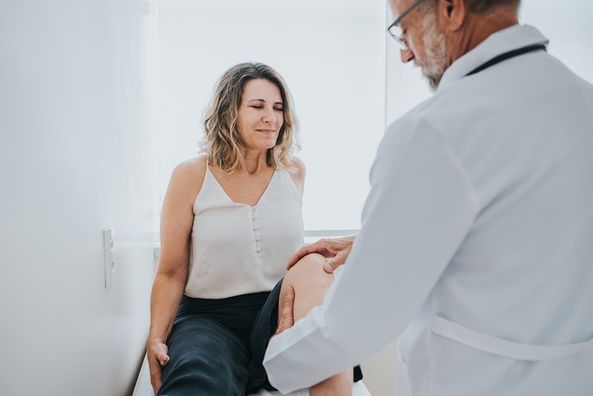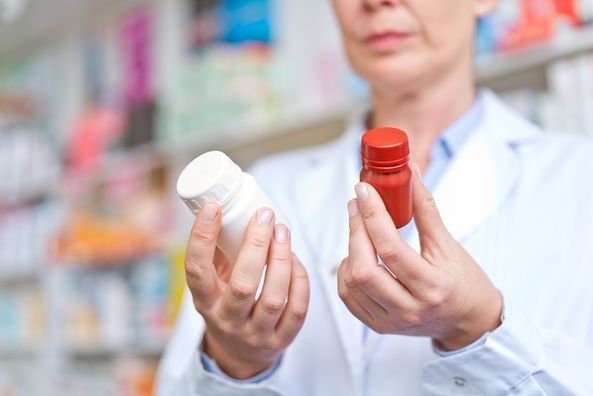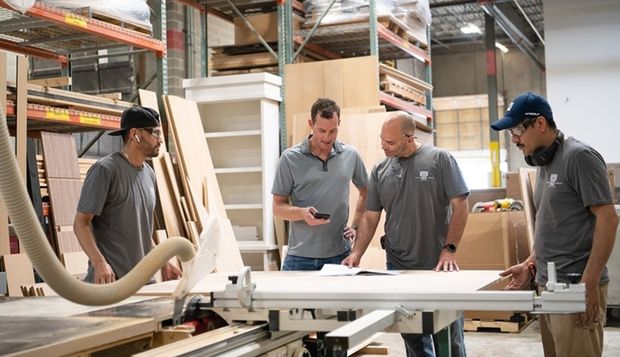Navigating treatment options after a prostate cancer diagnosis can seem like a daunting task. As with any cancer diagnosis, we always encourage our patients to seek multiple opinions and do their own research to decide the best course of action. We’re also committed to arming our patients and colleagues with our wealth of knowledge on the subject which brings us to our topic today: why you should consider brachytherapy treatment.
What is Brachytherapy?
LDR (low dose rate) Brachytherapy, also known as internal radiation, involves using ultrasound images to place tiny radioactive seeds in or near the cancerous tumor. Radiation kills the tumor by destroying the DNA within the cancer cell. When the cancer cell attempts to divide and reproduce itself, it is unable to do so because the DNA is no longer intact and as a result, the prostate cancer dies.
What is the history of Brachytherapy?
Doctors used brachytherapy to treat prostate cancer as long ago as the early 1900s. In fact, in 1906, Alexander Graham Bell, inventor of the telephone, argued in support of this very type of procedure. In 1916, the first prostate brachytherapy procedure was performed. Since then, technology has vastly improved with the invention of modern computer systems and ultrasound imaging. This new technology allows doctors to be extremely precise with regards to where they place radioactive material. The benefits of this have led to decreased side effects and lessened the risk of damage to other nearby organs such as the bladder and rectum.
Who are the best candidates for this type of prostate cancer treatment?
The best candidate for brachytherapy treatment is someone with a prostate tumor confined to the prostate gland that has a very low risk of spreading to other parts of the body. Brachytherapy treatment is also ideal for patients with intermediate or high-risk prostate cancer1. The seed implant is often performed in combination with external beam radiation therapy, plus or minus hormone therapy. Your physician will help guide you towards the most appropriate treatment plan for you based on your unique situation.
Are there side effects of Brachytherapy treatment?
Side effects of brachytherapy tend to only affect the small treatment area. We encourage patients to discuss potential side effects with their doctor; however, some tenderness and swelling in the treatment area are what patients usually experience. Studies have shown that brachytherapy treatment is an effective method for many types of prostate cancers.
What are the benefits of Brachytherapy treatment?
- Cure rates are equal or better. Cure rates in low-risk patients are equal to or better than surgery or external beam radiation therapy (EBRT). For intermediate and high-risk patients, brachytherapy combined with EBRT has resulted in superior outcomes when compared to surgery (1, 2).
- Brachytherapy is minimally invasive. With the seed implant, there are no incisions or stitches required such as in the case of surgery. Furthermore, there is minimal, if any, post-operative pain (3).
- Convenient scheduling. Since brachytherapy is an outpatient procedure, no hospital stay is required. Patients are not required to take weeks off of work such as in surgery.
- Cost-effective treatment. The common alternatives to brachytherapy are a surgical removal (prostatectomy) or many weeks of external beam radiation. When compared to both, Brachytherapy is the most cost effective option (4).
- Less chance of urinary and bowel irritation. Studies suggest that brachytherapy treatment incontinence rates are usually less than 1% 5. These odds are vastly better than that of getting surgery which can produce incontinence rates as high as 10% (6).
- Less impact on decreased sexual function. The prostate gland is a critical component of sexual functions in men so it is not uncommon for treatments of all kinds to have some effect. Research suggests that approximately 6 – 25% of patients who receive brachytherapy will experience a decrease in sexual function 7 versus approximately 50% of patients who undergo surgery 8. Erectile dysfunction medications are quite common these days and have proven to be very effective.
Preparing for the procedure
A clear liquid diet and laxatives are required the day before the procedure and nothing should be eaten by mouth after midnight the day of. These recommendations are for the patient’s safety — minimizing gas and providing better visualization of the prostate gland. Patients are advised to arrive one hour before the scheduled procedure. While in the operating room, the placement of needles that contain the radioactive seeds is guided by the use of ultrasound and fluoroscopy.
If you have been diagnosed with prostate cancer and would like to discuss brachytherapy treatment, schedule an appointment with our Brachytherapy provider today.
Sources:
Klein, E. Cleveland Clinic Localized Prostate Cancer Registry. In low-risk prostate cancer, quality of life is key to treatment choice. Urology Times, August 1, 2008.
Bittner, N et al. Interstitial brachytherapy should be standard of care for treatment of high-risk prostate cancer. Oncology. August 2008, p. 995‑1017.
Moran BJ, Gurel MH, Visockis J, Geary P. Post-operative pain and prostate brachytherapy. Int J Radiat Oncol Biol Phys 2003; 54: Issue 2 Supplement 0.
Quang et al. Technologic evolution in the treatment of prostate cancer. Oncology (21) 13. 1598 – 1603.
Feigenberg SJ, Lee WR, Desilvio ML, et alL Health-related quality of life in men receiving prostate brachytherapy on RTOG 98 – 05. Int J Radiat Oncol Biol Phys. 2005 Jul 15;62(4):956 – 64.
Steineck G, Helgesen F, Adolfsson J, et al: Quality of life after radical prostatectomy or watchful waiting. N Engl J Med. 2002 Sep 12;347(11):790 – 6.
Robinson JW, Moritz S, Fung T. Meta-analysis of rates of erectile function after treatment of localized prostate carcinoma. Int J Radiat Oncol Biol Phys. 2002 Nov 15;54(4):1063 – 8.
Frank, SJ et al. An assessment of quality of life following radical prostatectomy, high dose external beam radiation therapy and brachytherapy iodine implantation as monotherapies for localized prostate cancer. J Urol. 2007 Jun;177(6) 2151 – 6.
Health Topics:







